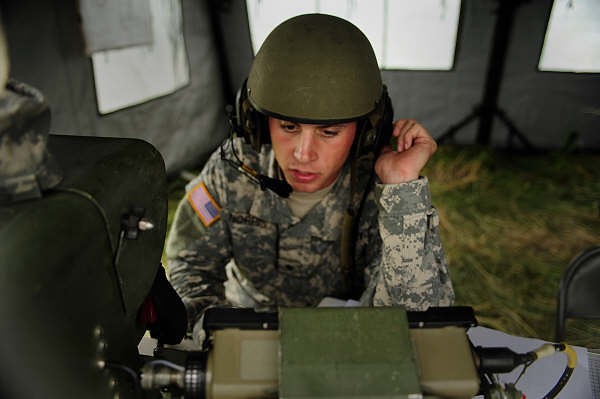

Objective
The objectives of this topic include the following: develop software / controls / integration that will allow a Variable Speed Fan Drive (VSFD) to be managed to reduce noise from the largest cause of HMMWV noise – the engine cooling fan; manage the thermostat and fan clutch such that it lowers the fan average acoustic signature and lowers the average acoustic detection distance of the HMMWVs; provide for adaptation to other systems, especially those that have been shown to suffer from the same acoustic signature issue; and develop better understanding and remedy for any unique challenges revealed along the way.
Description
Currently, HMMWV doesn’t attempt to modulate its fan or vehicle noise in any way to prevent detection in any way. However, the new approach from this topic can mitigate the highest risk source of acoustic detection on Army ground combat vehicles. Engine cooling fan noise has been found to be the most significant acoustic detection event on multiple vehicles, like HMMWV. In addition, there is no way for the Warfighter to predict or control exactly when the HMMWV engine cooling fan will be activated and the current fleet controls for the engine cooling fan is either on or off. The HMMWV cooling fan is obviously designed for maximum cooling, so with this type of control logic the engine cooling fan may only be activated for a couple of seconds to reduce the engine coolant temperatures to an acceptable level. With the addition of a variable speed fan drive system the cooling fans in these situations could be activated at a reduced speed and a much lower acoustic detection risk allowing the Warfighter to remain unnoticed by the enemy in many scenarios.
Phase I
Obtain hardware, develop software, integrate, test out and assess impact on reducing noise.
Phase II
Improve design, batch with any other needed changes (noise freed up by fixing fan noise), test on several different HMMWV models.
Phase III
Resolve any issues, document, release for production/kits, export to other systems.
For more information, and to submit your full proposal package, visit the DSIP Portal.
Objective
The objectives of this topic include the following: develop software / controls / integration that will allow a Variable Speed Fan Drive (VSFD) to be managed to reduce noise from the largest cause of HMMWV noise – the engine cooling fan; manage the thermostat and fan clutch such that it lowers the fan average acoustic signature and lowers the average acoustic detection distance of the HMMWVs; provide for adaptation to other systems, especially those that have been shown to suffer from the same acoustic signature issue; and develop better understanding and remedy for any unique challenges revealed along the way.
Description
Currently, HMMWV doesn’t attempt to modulate its fan or vehicle noise in any way to prevent detection in any way. However, the new approach from this topic can mitigate the highest risk source of acoustic detection on Army ground combat vehicles. Engine cooling fan noise has been found to be the most significant acoustic detection event on multiple vehicles, like HMMWV. In addition, there is no way for the Warfighter to predict or control exactly when the HMMWV engine cooling fan will be activated and the current fleet controls for the engine cooling fan is either on or off. The HMMWV cooling fan is obviously designed for maximum cooling, so with this type of control logic the engine cooling fan may only be activated for a couple of seconds to reduce the engine coolant temperatures to an acceptable level. With the addition of a variable speed fan drive system the cooling fans in these situations could be activated at a reduced speed and a much lower acoustic detection risk allowing the Warfighter to remain unnoticed by the enemy in many scenarios.
Phase I
Obtain hardware, develop software, integrate, test out and assess impact on reducing noise.
Phase II
Improve design, batch with any other needed changes (noise freed up by fixing fan noise), test on several different HMMWV models.
Phase III
Resolve any issues, document, release for production/kits, export to other systems.
For more information, and to submit your full proposal package, visit the DSIP Portal.
